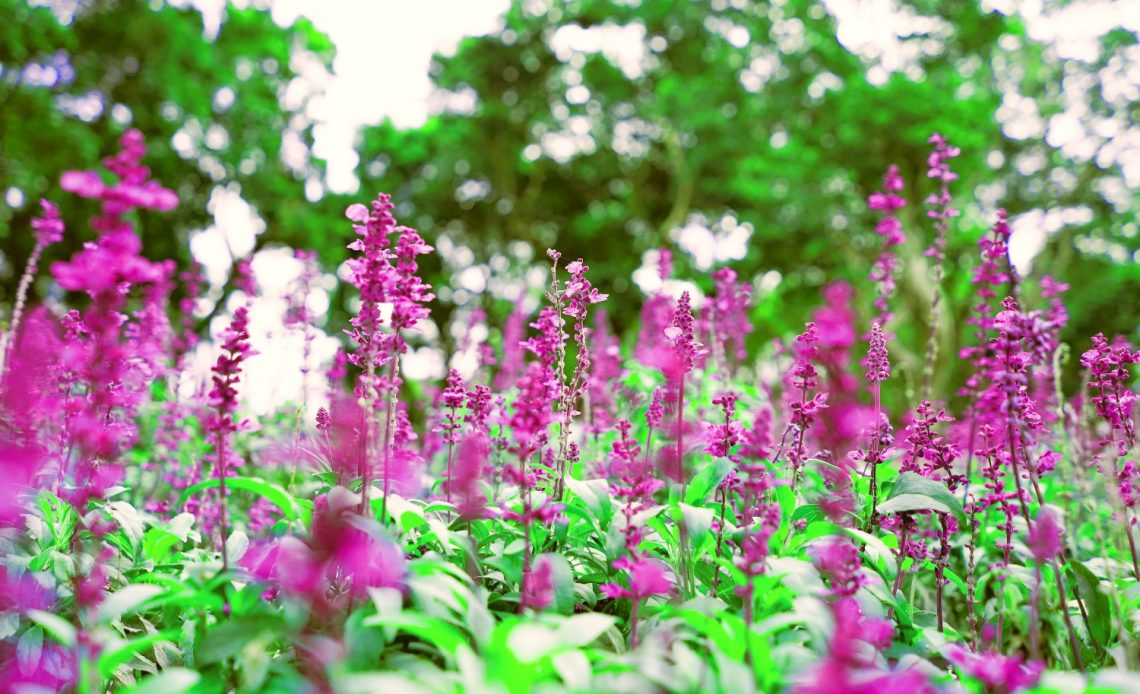

We’re here to help! Wild Yards is a completely free website that is 100% dedicated to helping you create a wildlife-friendly, sustainable yard. Read more
WildYards is reader-supported. When you buy a product through a link on our site, we may earn a comission. Every product is independently selected by our (obsessive) editors and our reviews are unbiased and objective. Read more about our mission or our privacy policy.
Salvias are a beautiful addition to any landscape. These flowers are incredibly easy to care for, requiring only weekly waterings once they’re established. They can be grown in full sun and in nutrient-poor soils, as long as they drain well. Overall, salvias are very low maintenance. However, salvias do like to be pruned every year. Cutting them back helps them to produce more blooms during the next season. But how can you tell when to cut back salvias for winter?
It’s best to trim your salvia plants in mid to late fall before the cold weather sets in. Getting rid of dead foliage will clean the shrubs up a bit and stimulate new growth. How you prune your salvia depends on what variety you have growing in your yard.
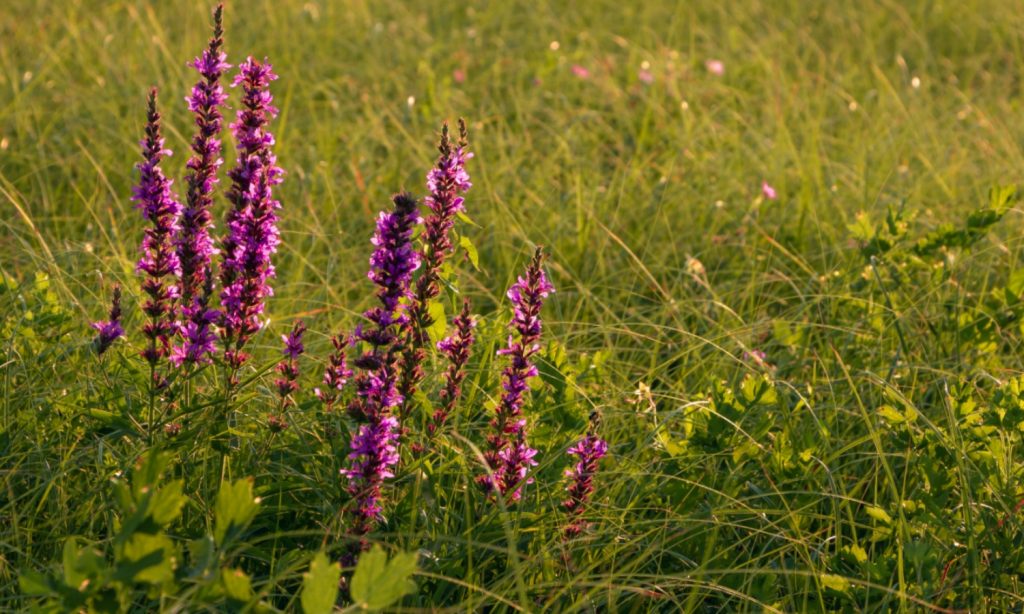
Why should you cut back your salvias?
Not all plants require pruning, and salvia is one of them. You do not have to trim your salvias to get them to bloom the following season. They’ll still produce flowers. But they’ll also look like a big scraggly mess. Unless you remove all of the dead twigs, leaves, and flower heads that have developed over the last season, they’ll still be there, nestled amongst the new blossoms during the next season.
That tangled mixture of dead and living foliage is an eyesore. And if your salvias are covered in dead stuff, it will prevent sunlight from reaching the whole plant, resulting in yellowed, anemic-looking foliage. Trimming away the old growth helps the plant produce energy, and focuses that energy on creating new leaves and new blooms.
When is the best time to cut back salvias for winter?
Salvias can be pruned just about anytime. These are sturdy plants that can withstand regular trimming. While most gardeners deadhead their salvias throughout the growing season, they only truly prune their salvias twice a year: once in the spring to help shape the plants, and once more later in the year to help the bushes prepare for their winter dormancy.
It’s best to cut your salvias back in mid to late fall. This gives the bush a little time to recover before going dormant. If you live in a region that has warm winters and your salvias are able to stick around until spring, you can delay the pruning a bit. Salvias that don’t die back and stay green throughout the cooler weather can be trimmed back during the winter months.

What are the 4 types of salvias?
Before using your clippers on them, take a good look at your salvias. Determining what kind of salvias are in your landscaping will allow you to prune them more effectively, so they can grow their best next spring.
- Herbaceous woody salvias — These types of salvias are a combination of foliage. Tender green stems develop from the woody older growth toward the center and base of the shrub.
- Rosette salvias — Easy to identify, rosette salvia varieties are low-growing shrubs with flowers emerging from tall stalks with clusters of leaves. In warmer growing zones, these salvias are considered evergreens.
- Deciduous herbaceous salvias — Old growth of deciduous herbaceous salvia varieties die back so new shoots can take their place during the following growing season.
- Evergreen salvias — As the name suggests, evergreen salvias stay green all year long. Certain varieties of salvias that are not considered evergreens in cooler climates stay evergreen in warm growing zones.
Now that you know what type (or types) of salvia you have, you’re ready to start trimming. Be sure to use a sharp pair of clippers or scissors. Use paper towels or a clean cloth to wipe your trimmers down with 70% to 100% isopropyl alcohol. If your salvia is showing signs of disease (powdery mildew, discoloration of stems and leaves, etc.), you’ll need to disinfect your trimmers after each snip to prevent the spread of infection.
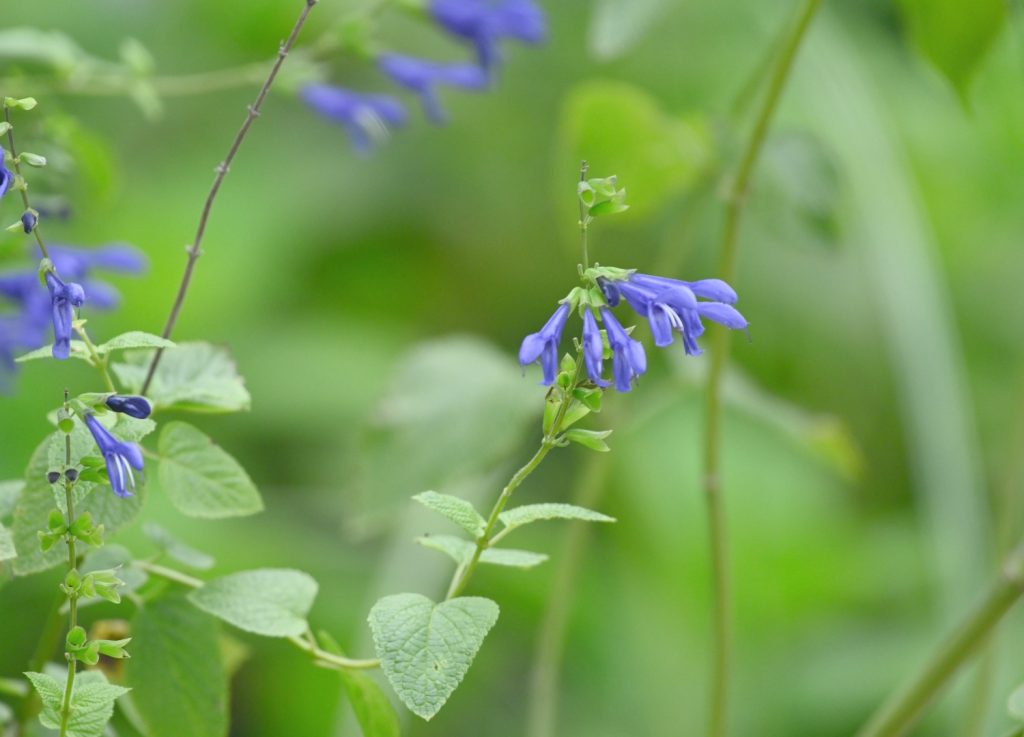
Pruning herbaceous woody salvias
The best way to prune herbaceous woody salvias is to thin them out in the center. This stops the plant from becoming leggy. It will also increase air circulation, preventing powdery mildew and other fungal infections. Remove the smallest, weakest, sickliest-looking branches first. If the whole plant looks healthy, simply remove some branches from the center. Be sure to trim a few of the outside branches of the salvia to give it a nice shape.
Take this opportunity to remove any old blooms and dead stems. Trim dying flowers away to the first set of leaves beneath the flower head. Never cut the plant down to a small nub. Leaving only 3 or 4 inches above the ground makes it difficult for these types of salvias to recover. When it comes to pruning herbaceous woody salvias for the winter, less is more.
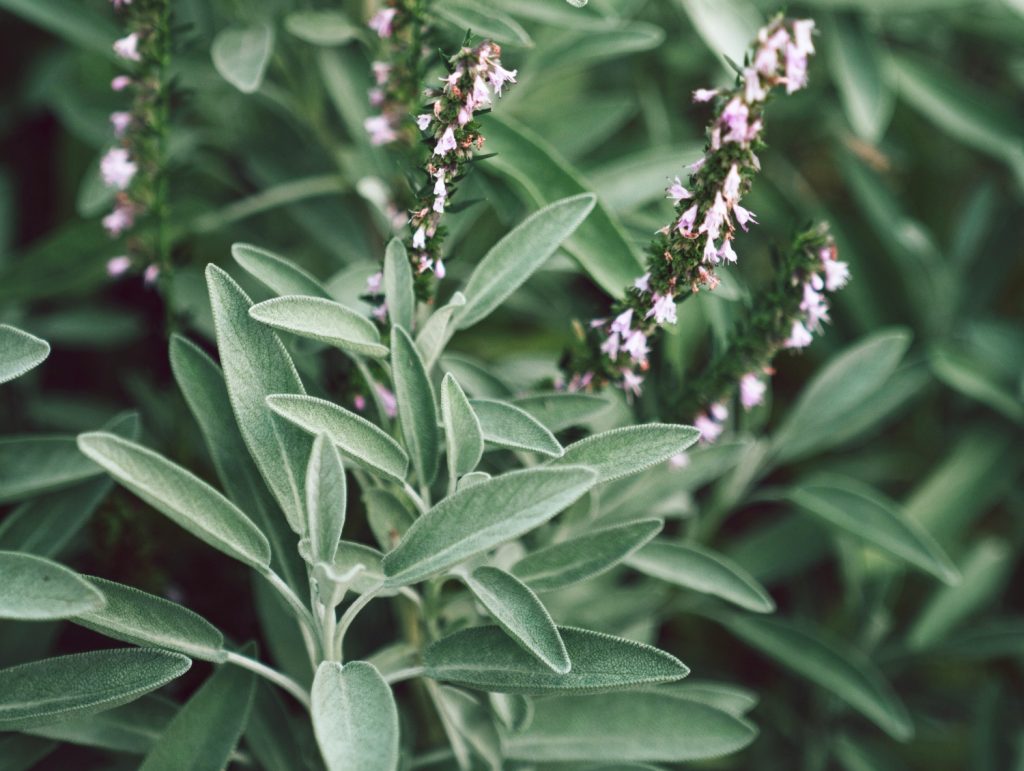
Pruning rosette salvias
These are the easiest types of salvia to prune. To cut back rosette salvias for winter, simply remove flowering stems all the way down to the base of the plant. Rosette salvias have basal leaves, a circular cluster of leaves that grow close to the ground — much like dandelions. You’ll want to trim away all of the stems erupting from the center of the basal leaves.
You can also trim away any dead foliage on the basal leaves, and shape the plant a bit to promote healthy growth in the springtime. If you were careful to deadhead your rosette salvias throughout the year, then cutting them back for the winter will be a breeze.
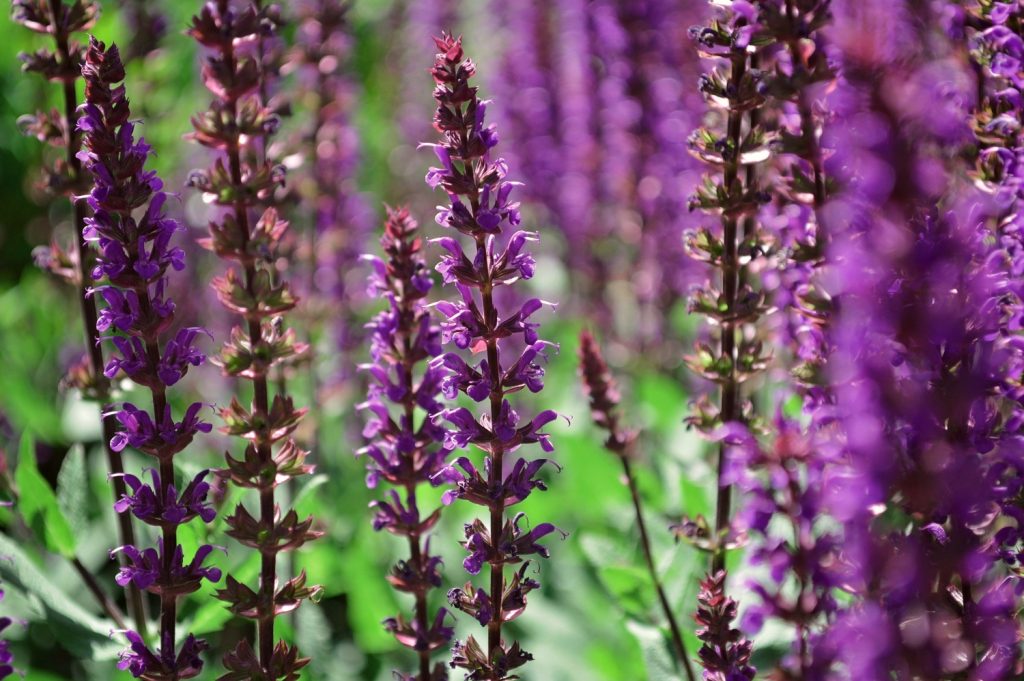
Pruning deciduous herbaceous salvias
Unlike herbaceous woody varieties, deciduous herbaceous salvias are comprised entirely of soft green stems. If you don’t prune them regularly, the foliage can become too dense, locking in moisture and creating an ideal environment for diseases, like powdery mildew. It’s important to thin these types of salvias out throughout the year, to prevent them from becoming sick.
It’s better to prune deciduous herbaceous salvias in the spring. Cutting them down to the ground shortly after the last frost of the season promotes healthy new growth. But you can prepare your deciduous herbaceous salvias for winter by trimming the bush back in late summer or early to mid-fall. Once these salvias have finished blooming, take the stems all the way back to the base of the plant. Be sure to trim the stems evenly, and leave them roughly an inch above the ground.
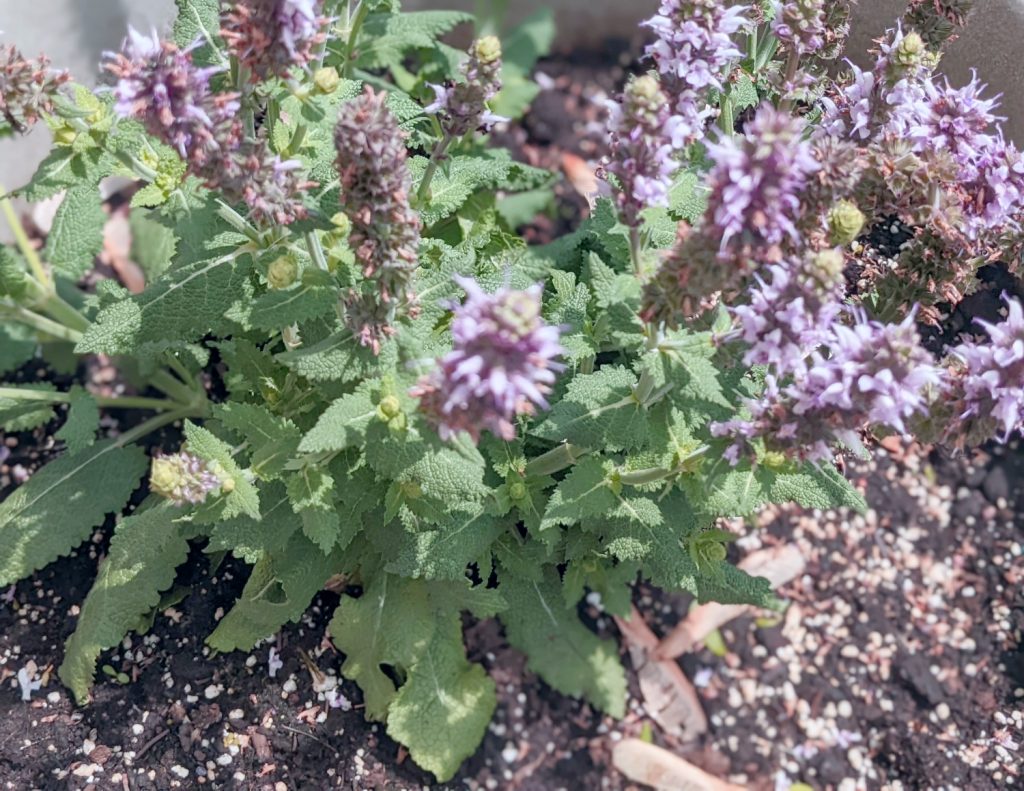
Pruning evergreen salvias
If you’re wondering when to cut back salvias for winter, pruning evergreen varieties can seem confusing at first. What’s the best way to prepare salvia for winter when that salvia doesn’t even go dormant over the winter? Evergreen salvias grow from spring to fall. So, even though they don’t lose their foliage when the weather cools down, they do go dormant relatively speaking. Pruning them helps them conserve their energy for the growing season, so they can produce flowers for bees and other pollinators to enjoy.
To trim your evergreen salvias, simply use your clippers to shape the plant and give it a more manicured appearance. Remove dead and dying flowers to just above the next set of leaves on the stem. Cut away twisted, broken stems to prevent them from becoming a mass of tangled sticks. You can trim your evergreen salvias in late fall, or even during the winter if you need to.
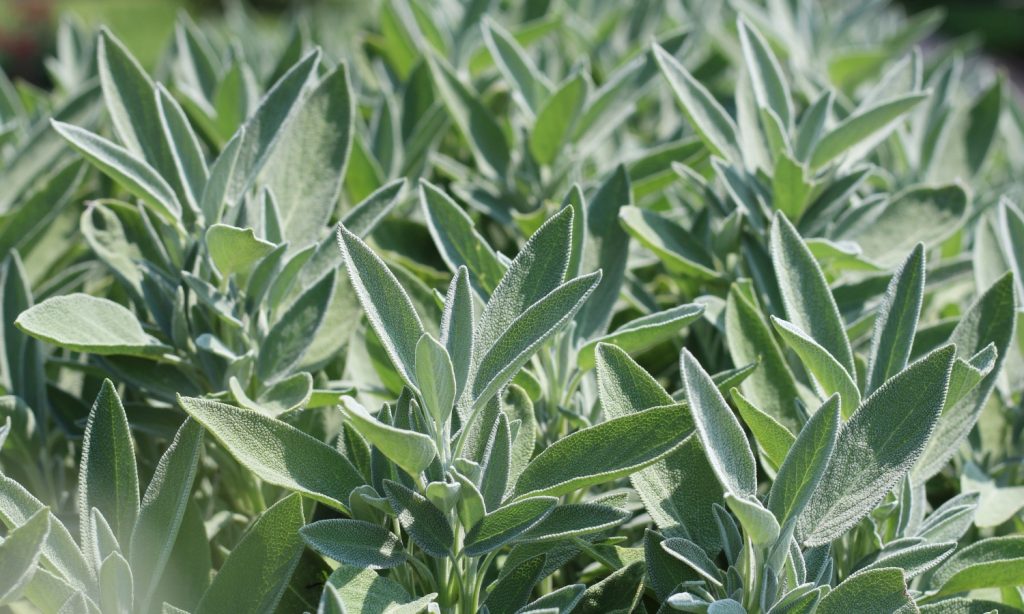
Can salvia plants survive the winter without being pruned?
Yes, absolutely! Remember, salvias are extremely sturdy. They’re easy to grow and easy to take care of, that’s why they’re so popular in landscaping. If you forget to prune your salvia bushes, your plants will be just fine until the spring, although it’s safe to remove dead leaves and stems all throughout the winter. And once your salvias sprout up anew in the springtime, you can shape the plants and remove leggy, spindly, or dense foliage to improve their health and appearance.
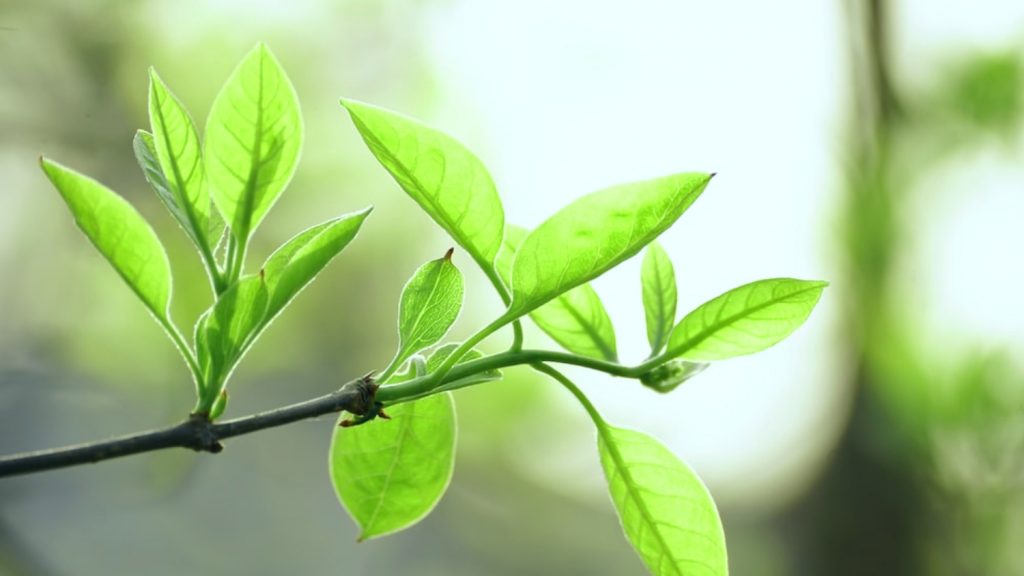
What should you do with the stems, leaves, and flowers you trim away?
If the foliage that you trim from your salvias is diseased, it’s best to bury it deep into the soil in a location away from your other plants, to prevent the spread of disease. If the ground in your backyard is too hard to dig through, you can burn the trimmings instead. And, if neither of these options works for you, you can always just seal the trimmings in a garbage bag and haul them out to the curb for pickup.
If the trimmings are not diseased, consider starting a compost bucket to create homemade fertilizer for your plants. Garden vegetables like tomatoes, turnips, cucumbers, and bok choy grow best in soils that are rich in organic matter. Compost can also be used to feed the ornamental flowers and shrubs in your landscaping, including your salvias. Or you can use it to build your own Hugelkultur bed.
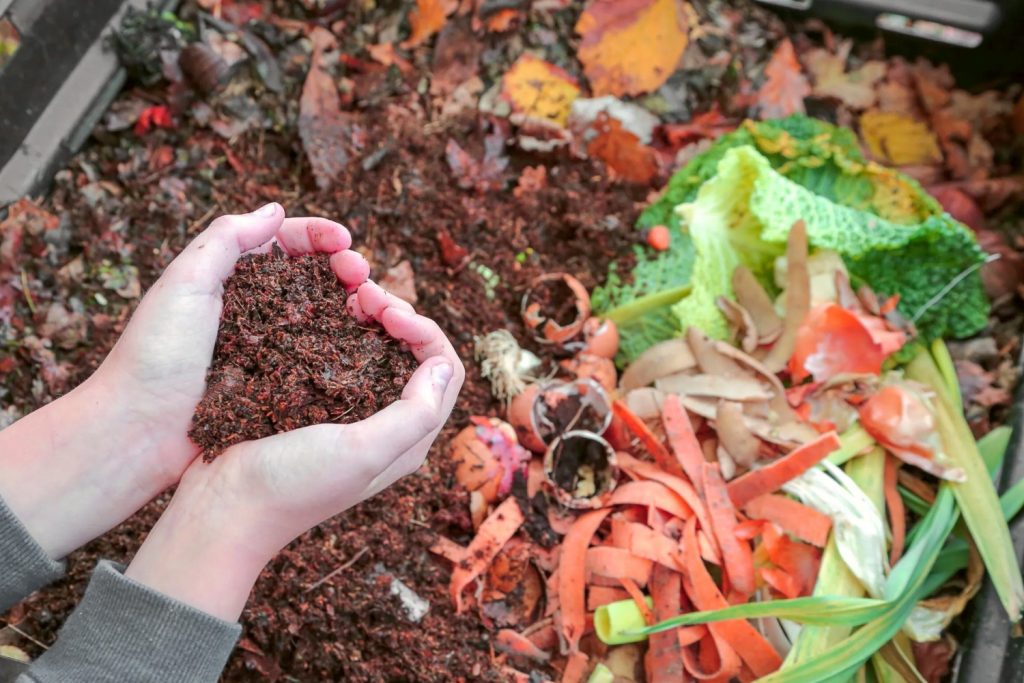
Tips for pruning your salvias successfully
Salvias will grow whether you prune them or not. But pruning them regularly makes cutting them back for the winter much easier. Be sure to deadhead your salvias throughout the year, and remove dead branches as needed. That way, you can simply thin the salvias out a bit in the fall to get them ready for winter.
By taking the time to prune your salvias in the fall and winter months, you’ll help the plants make it through the cold weather with ease. And your efforts will more than pay off when your plants explode with blooms next season.
